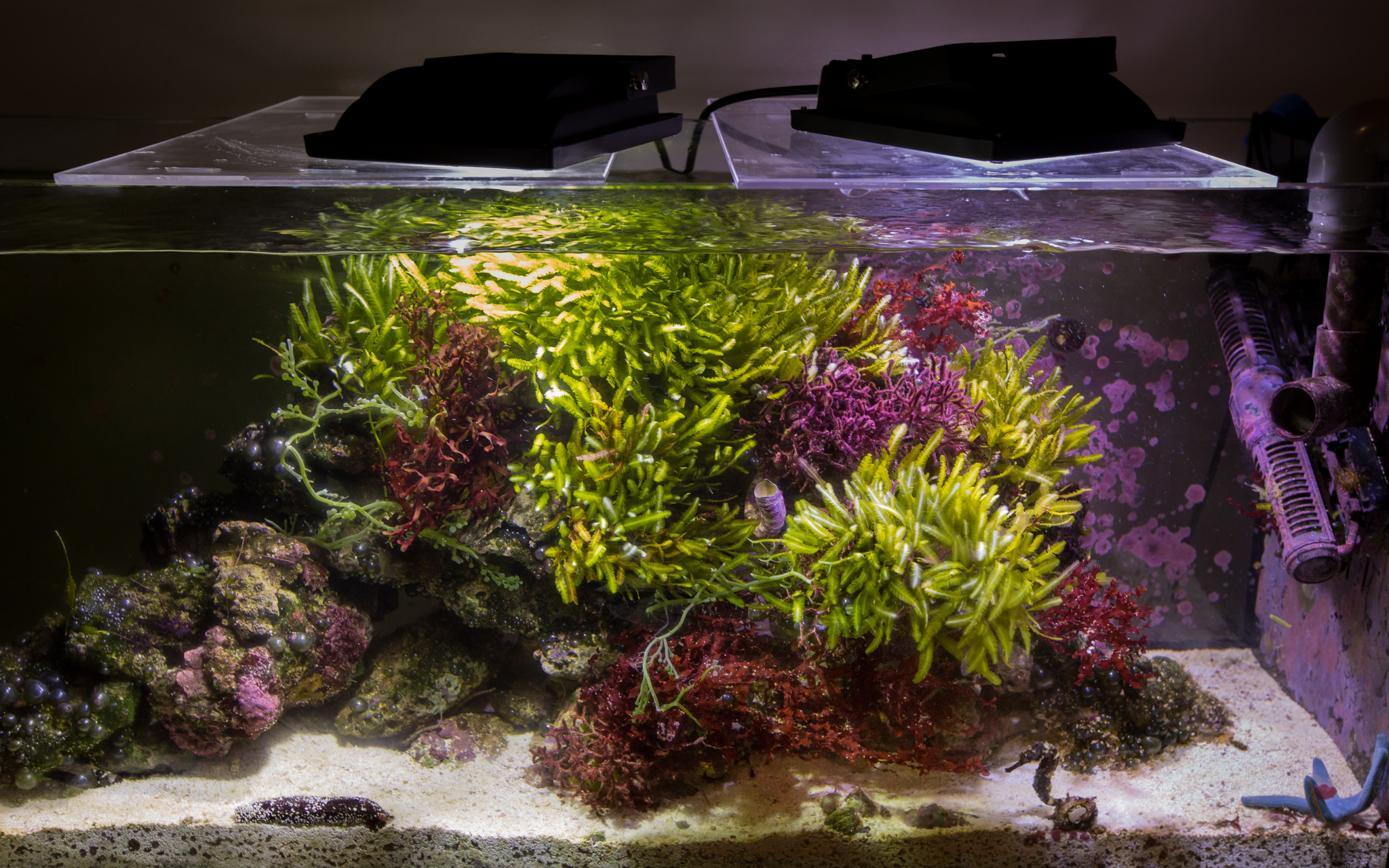Macroalgae In Display Tank
Looking for a way to enhance the visual appeal of your aquarium? Macroalgae in display tank might be the answer. These beautiful and diverse types of algae have become increasingly popular in recent years due to their ability to create a unique and vibrant aquatic environment.
If you're considering adding macroalgae to your display tank, you may have some concerns about the maintenance involved or the impact they can have on water quality. However, with a little bit of planning and care, macroalgae can be a stunning addition to any aquarium.
The primary target of macroalgae in display tank is to create an attractive and healthy environment for your aquatic pets. Macroalgae can provide a natural source of food, and can also help to regulate oxygen levels and improve water quality, leading to a healthier and happier ecosystem overall.
So how do you get started with macroalgae in display tank? The first step is to do some research and figure out which types of macroalgae will work best for your tank size and water chemistry. From there, you'll need to carefully consider how to incorporate the macroalgae into your existing aquatic setup.
The Benefits of Macroalgae in Display Tank
Personally, I've had a lot of success with macroalgae in my own display tank. Not only have I noticed an improvement in water quality, but the addition of macroalgae has also added an extra level of color and visual interest to the tank.
Macroalgae is also a great food source for some types of aquatic life, and can help to reduce the overall amount of waste in the tank. Additionally, macroalgae can help to reduce the amount of excess nutrients in the water, making it easier to maintain proper levels of pH, alkalinity, and other important parameters.
Choosing the Right Macroalgae for Your Tank
When it comes to selecting the right type of macroalgae for your display tank, there are a few key factors to consider. First and foremost, you'll want to choose a variety of macroalgae that will work well within your existing aquatic setup.
You'll also need to think about lighting and water quality requirements, as different types of macroalgae may have different needs in terms of nutrients, pH, and other factors. Work with a knowledgeable aquarium specialist or do your own research to determine the best types of macroalgae for your particular tank setup.
Caring for Your Macroalgae
Once you've selected the type of macroalgae you want to incorporate into your display tank, it's important to take proper care of them to ensure they thrive. This means providing the right amount of light, nutrients, and water quality, as well as monitoring for any signs of disease or stress.
You may also need to prune your macroalgae periodically to prevent overcrowding and to promote healthy growth. If you're not sure how to properly care for your macroalgae, seek out advice from an experienced aquarium hobbyist or an aquarium specialist.
Common Mistakes to Avoid
One of the most common mistakes people make when adding macroalgae to their display tank is not doing enough research beforehand. It's important to understand the specific needs of each type of macroalgae and to ensure that your tank can meet those needs before making a purchase.
Another common mistake is overfeeding or over-supplementing with nutrients, which can lead to excess algae growth and can even be harmful to other aquatic life in the tank.
Conclusion of Macroalgae in Display Tank
All in all, macroalgae in display tank can be a great addition to any aquarium setup, so long as you take the time to do your research and provide proper care. With the right setup and a little bit of maintenance, you can create a stunning and vibrant aquatic environment that your fish, plants, and other aquatic life will love.
Question and Answer
Q: Will adding macroalgae to my tank increase my maintenance requirements?
A: Depending on the specific type of macroalgae you choose, you may need to do some additional pruning and maintenance. However, many types of macroalgae require little to no maintenance beyond regular water changes and other routine aquarium care.
Q: Does macroalgae release harmful toxins into the water?
A: Generally, no. Most types of macroalgae are harmless to other aquatic life, and can actually help to improve water quality by absorbing excess nutrients.
Q: Can I add macroalgae to a saltwater or freshwater aquarium?
A: Macroalgae can be added to both saltwater and freshwater aquariums, although you may need to select different types of macroalgae depending on the specific environment and water chemistry you're working with.
Q: Will macroalgae compete with my fish for food or other resources?
A: Depending on the specific type of macroalgae you choose, it may provide a natural source of food for your fish and other aquatic life. However, macroalgae typically won't compete with other forms of aquatic life for resources, and can actually help to create a more balanced and healthy ecosystem overall.
Gallery
Best Macroalgae For Reef Tanks – Salt Tank Report

Photo Credit by: bing.com / macroalgae halimeda
Are Macroalgae Display Tanks Easy To Do? Why Isn't It More Popular
Photo Credit by: bing.com / macroalgae isn reef2reef aquarium wondering
Micro And Also Macro Algae - Macroalgae In Display Tank
Photo Credit by: bing.com / algae caulerpa macro macroalgae refugium saltwater aquarium
New Macro Algae Display Tank At Eddies - YouTube

Photo Credit by: bing.com / tank display algae macro
40g Long Naturally Lit Macro-algae Tank - Page 2 - General Reefkeeping

Photo Credit by: bing.com / algae macro planted saltwater
